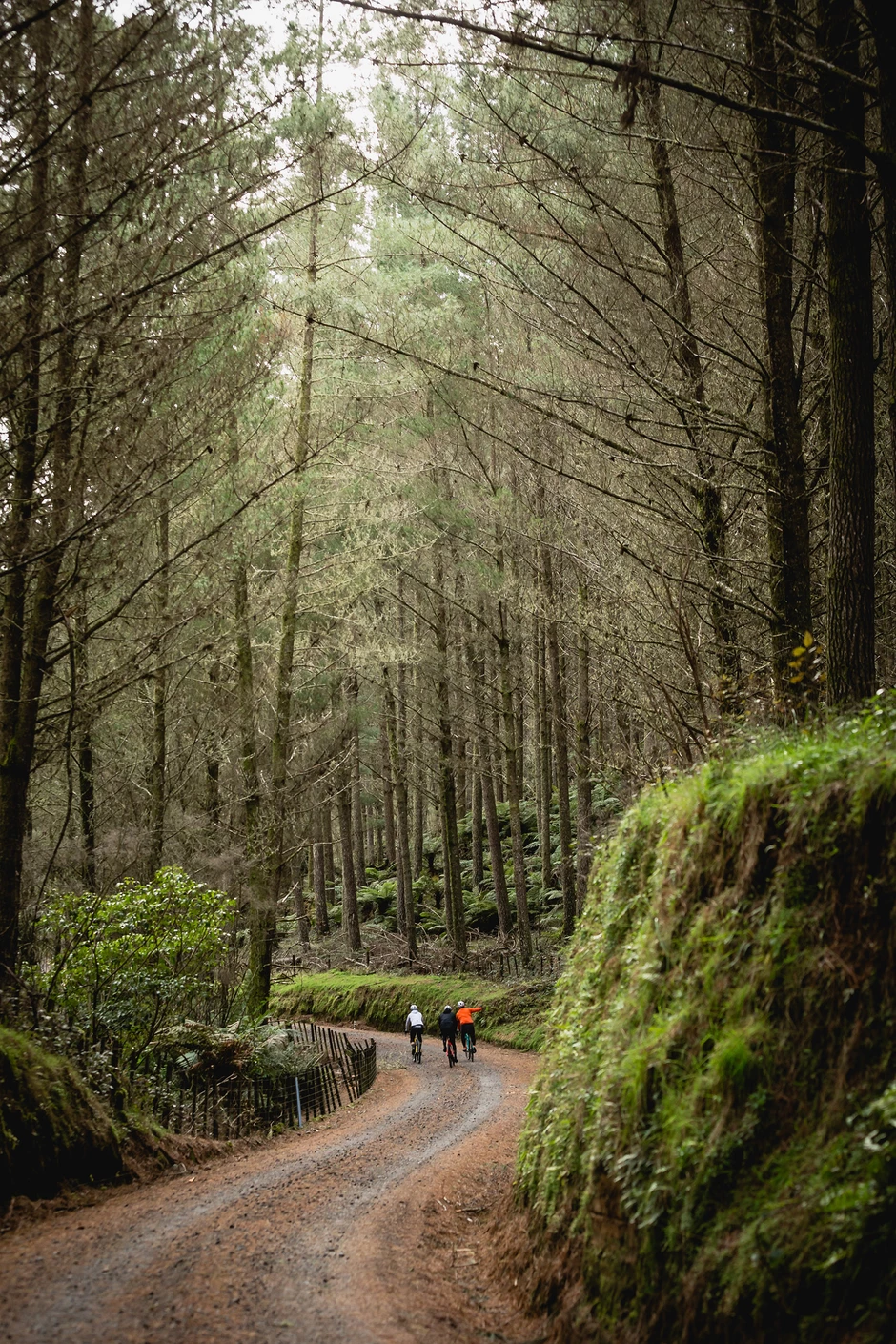Words: Cam Baker
Image: Cameron Mackenzie
I’m from the dark side, a mountain biker before anything else. Before you try to tell me that I’m not qualified to talk about dropbar riding, I feel like it’s worth pointing out that it’s your kind that are chasing what my kind do, venturing off the tarmac and into the woods. We’ve spent years listening to our wheels skip across gravel and dirt, so I’m here to offer up a few tips that we’ve picked up along the way to help you on your backcountry adventures.
Carbon Cages? No Thanks
Our beloved chipseal can be a little rough at times, but you can rest assured knowing it’s nothing compared to our potholed gravel lanes and trails. I’m a fan of saving weight on components that don’t do a ton, such as bottle cages, but I can tell you from experience that if you want to ride off road, your bottle cage is no longer one of those components. Bottles rattle around and flimsy, lightweight carbon cages simply won’t cut it in the wilderness (just ask Liam, he’s broken a few now). Go for a sturdy metal cage. If you’re dead-set on saving weight, buy a titanium cage and you can lighten up your wallet, too.
Cheap Carbon? No Thanks.
While we’re talking about carbon, I’m here to tell you that cheap, Chinese carbon components should not ever hit the trail. Your Chinarello might feel fine on the road, but the risk with buying direct from China is you don’t really know what QC checks, if any, have been conducted. If you’re going to leave the tarmac, buy your components from reputable manufacturers.

Our Pedals are Better Than Yours
If you wanna get serious about your gravel pursuit, you’ll want to ditch your road pedals and pick up a pair of mountain bike pedals. Mountain bike pedals are designed to content with dirt, dust and mud and the smaller cleat means that shoes can incorporate some tread, giving you a bit of grip on the inevitable hike-a-bike. The Shimano XT range is a good place to start, giving you the option to go for a smaller SPD pedal, or a bigger pedal with a cage around the SPD mechanism to give you a bit more of a platform to stomp on. You’ll probably need new shoes, too, seeing as mountain bike cleats and road cleats are different. More and more gravel-specific shoes are popping up, otherwise a pair of cross country MTB shoes will sort you out.
Ditch the Tubes
Remember that time you rolled up to your local bunchie with 28’s and everyone made fun of you? Sucked right? You’ll be stoked to know that the gravel is a judgement-free zone and that if anything, the wider the tyres the more you’ll be embraced. When you throw your new tyres on, you may as well set them up tubeless if your tyre-rim combo allows. Your new, wide tyres mean you can run lower pressures but by going tubeless, you can drop even lower. Lower pressures mean more grip and more comfort; two for one! Tubeless tyres need to be filled with sealant to create an airtight seal between your rim and tyre. This isn’t all it does, though. Sealant can also seal up small punctures, meaning you won’t always have to stop mid-ride to plug in a new tube.
Go Wide
Your road wheelset probably has an internal width of somewhere between 15-18mm, which works great for your favourite pair of 25C road tyres. If you were to sit, say, a 40C tyre to this rim though, it’d be a different story. Wider rims enable tyres to inflate much closer to a U-shape, versus a narrower rim which might have a tyre balloon out and inflate in a shape closer to a lightbulb. The U-shape essentially means more air volume, so more grip and a comfier ride for you. Try looking for a wheelset somewhere around the 21mm-plus inner width mark. If you’re feeling unstable, you can always try wider handlebars, too. The wider your bars, the more stability and control you’ll experience riding.
If ya stick to what I said above, you’ll be well on your way to conquering the gravel and realising that you should’ve gotten off the road and onto the beaten track ages ago. You’ll be able to find your own way from here on out!

